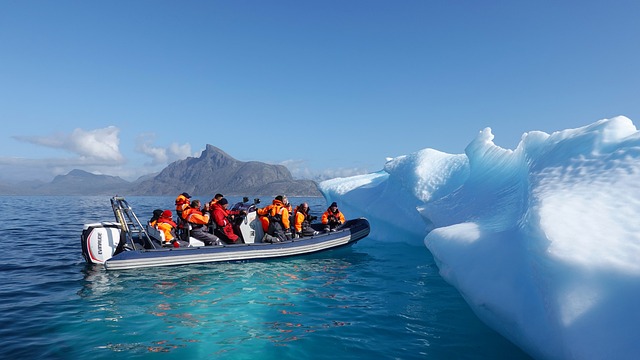
The Sun is a massive ball of hot Plasma and is very close to Earth. Its energy output has fallen over the past five decades. This is not the only reason for recent temperature rises. In the same time frame, greenhouse gas emissions have increased by a lot. Our climate has seen an increase of about 0.8 degrees Celsius.
One of many explanations of this warming is the release of carbon dioxide from burning fossil fuels. This gas is essential to plants' photosynthesis and it breaks down when it absorbs heat. The plants will soon die as there is more of the noxious gas. This will make it impossible for microbial life on the planet to flourish.

The number of sunspots visible on the surface is a measure of solar activity. There are two 11-year periods. The sun was much bigger than it is today during the first cycle. It will shrink over the next few hundred years. It will eventually become a red giant. Its gravity will pull at the planet and it will affect its orbit.
The Sun has a 22-year magnetic circle. The solar cycle is not correlated with the average temperature in the lower atmosphere. So the answer to the question, is the sun getting hotter? We don't know the answer, but we know that it is growing.
Ocean currents and mountain formation are two other factors that can affect the temperature of our planet. These factors all tie into the grandclimate cycle. If the cycle changes in the next few months, then we may see an abrupt shift or temperature.
The Earth's tides, which result from the Earth's relationship with the moon, are another factor. Tide levels will be lower when the Moon is in between Earth and the Sun. The tides are influenced in large part by the oceans bulging in the sun's direction. Conversely, tides are higher when the Moon appears far away from Earth. The tides don't rise when the Moon is far away from Earth, but that is a good thing for humans.

Another factor that makes the Sun one of the most important players in our weather is its large amount of oxygen. This gas is vital to the existence of life on this planet. However, a decrease in its availability will result in it becoming very difficult to sustain. Eventually, plants will become extinct, and only microbial life will be left. Our planet's home will cease to exist.
The sun is not perfect because it is a main-sequence star. Although some parts of the sun are small, it is still a huge ball of plasma. Since the sun's formation, its intensity has increased by about 40%. At this point, it's about halfway through its life.
Despite its old age, it still plays a major role in the climate. Even if it doesn’t get much warmer in the next few centuries, its atmosphere will still have an adverse impact on Earth’s orbit.
FAQ
What are some of the solutions proposed to climate change? How effective are they?
Climate change has become one of the most urgent issues of our time. It requires government, businesses and citizens to pay attention. A disrupted climate system is evident by rising temperatures, extreme weather events and increased sea levels. Numerous solutions have been suggested to deal with this phenomenon. They include technological solutions as well as behavioral changes and geoengineering.
Technological Solutions. A variety of technological solutions have emerged to combat climate change. These solutions include renewable energy sources like wind and solar power, which are reliable sources of clean energy without causing any adverse effects on the environment. Electric cars powered with renewable energy could dramatically reduce pollution in cities and replace petrol vehicles. Other technological solutions include reforestation projects that aim to increase carbon sequestration in trees and soil as well as coastal protection systems to protect vulnerable places against rising ocean levels.
Behavioral Changes: By making simple alterations to established routines can make a big difference in reducing emissions and limiting future climate disruption. By purchasing local goods, you can lower emissions related to transport costs and reduce transportation costs. Also, using public or active transport instead of personal cars optimizes the use and reduces cost and air pollution. Additionally, home insulation that is more efficient can reduce dependence on gas boilers for heating your homes and lowers emissions.
Geo-engineering (GEO): This involves large-scale interventions into natural systems that may be too risky because of potentially unforeseeable consequences.
These solutions are only as effective as the producers who invest in green alternatives. Currently, electric Cars are more expensive than petrol models. However, economic incentives favoring green investments play an important role in incentivizing alternative solutions uptake. Market forces cannot guarantee their utility so they must be mandated via policy measures. This will require regulatory bodies to engage all players further. Nontechnological solutions work on one level while solving global warming requires everyone involved.
What is the potential for new technologies to address climate change?
There are many technologies that can be used to tackle this global problem. We can now transition to a more sustainable tomorrow by utilizing renewable energy sources such as solar, wind and geothermal, as well energy storage systems like thermal tanks or battery packs.
New methods of carbon capture and sequestration can be employed to draw down greenhouse gas levels, while enhanced agricultural practices can reduce emissions from livestock and soil degradation. Smart grid technology can be combined with existing power infrastructure to increase efficiency. Additionally, improved building design can reduce energy consumption.
Researchers can also use cutting-edge synthetic biology to develop organisms that can convert green fuels like CO2 laser into biofuels and other feedstocks. This could be a major shift in transportation if there is a shift away from petrol-based vehicles to electric cars powered solely by renewable sources.
Finally, increasing investment in digital tech and AI can enable people to access data across borders and help them make more informed consumption decisions. Understanding our carbon production role is essential to help us all be better stewards.
What is the climate impact of land use and deforestation?
Climate change is directly affected by land use changes and deforestation. When trees are cut down or burned, they can no longer absorb carbon dioxide, one of the most important greenhouse gases on Earth. This is why less carbon dioxide is removed when trees are cut down or burned for agricultural reasons.
However, land use changes can increase greenhouse gas emissions. To illustrate, if forests are replaced with agricultural lands to support livestock production, fertilizer and pesticide use could increase methane emissions. In addition, clearing can increase exposure to soils that contain large amounts of stored carbon; when these soils are turned over or disturbed by farming activities, they release additional carbon dioxide into the atmosphere.
Deforestation, land-use change and other environmental impacts can cause more greenhouse gas emissions than they do. It can also affect regional air quality. The smoke from deforestation's burning events has been linked to poor visibility and other health concerns, such as asthma or other respiratory diseases. These changes in air quality can have a cumulative affect on global climate change. The increase in temperatures is due to more sun hitting the Earth's surfaces.
In conclusion, both deforestation (and land-use) change have been a major contributor to rising levels of global greenhouse gases emissions. Additionally, they have had negative effects on local airquality that has contributed further to climate changes. These practices must be reduced if serious efforts are to reduce climate change.
Statistics
- features Earth's average surface temperature in 2022 tied with 2015 as the fifth warmest on record, according to an analysis by NASA. (climate.nasa.gov)
- Fossil fuel production must decline by roughly 6 percent per year between 2020 and 2030. (un.org)
- This source accounts for about 10% of all the water that enters this highly productive farmland, including rivers and rain. (climate.nasa.gov)
- Indigenous peoples and local communities receive less than 1% of all climate funding despite scoring wins for people and nature Africa's broken food markets must be fixed to tackle hunger (climatechangenews.com)
- According to the 2014 report on Climate Change Impacts, Adaptation, and Vulnerability (page 8) from the United Nations Intergovernmental Panel on Climate Change, governments at various levels are also getting better at adaptation. (climate.nasa.gov)
External Links
How To
How to Invest in Clean Energy and Support the Transition to a Low-Carbon Future
Clean energy is any form of renewable energy that doesn't produce or emit pollution. It encompasses technologies like solar photovoltaics and wind power. Renewable energy sources have many environmental benefits. This includes a decreased reliance on fossil oil, a decrease in air pollution caused by traditional electricity methods, as well as providing reliable electric access to remote locations.
Investors have the opportunity to invest in clean-energy projects by purchasing shares of companies that create innovative technologies. This could be done by investing in publically traded stock, mutual funds, or ETFs related to renewable energies. Investors can also consider direct investments into start-ups or venture capital projects to fund research and development for clean energy technologies.
Clean energy investors support innovation that reduces harmful emissions from electricity generation. This investment could also result in increased economic development, as it creates jobs for skilled labor and engineers related to the production renewable energy systems. Lastly, investors may see a return on their investment in clean energy through tax incentives programs. These incentives encourage green technology investments such as solar panels, wind farms, and biomass heat production systems.
We can make a difference by investing in companies which create cleaner electricity from renewable resources, such as sun, winds, and water. While we are avoiding harmful activities to the environment, it is possible to support the transition toward a low-carbon future.